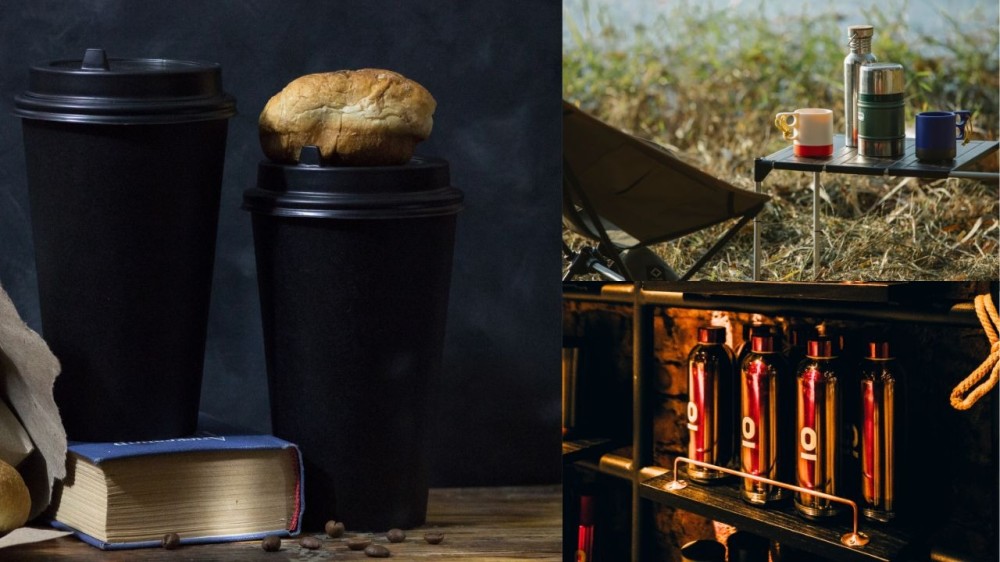
If you are grateful for the ability to keep your favorite drink as hot or cold as you like, then you should thank Scottish scientist James Dewar, inventor of the thermos, for this beautiful addition to our lives. Having a thermos is essential in every home. It is used by adults and children wherever they are. Through it, you can keep your cup of coffee hot in the winter, and your cup of juice cold on days of extreme heat. But how is that?
The mechanism of action of thermos
Suppose you took a cup of hot water and another cup of cold water and put them at room temperature, what would happen? According to the dynamic fact of heat transfer, when you place any two objects with different temperatures at the same temperature, they will soon reach the same temperature due to heat transfer.
That is, a thermal transfer occurred between the room and the hot cup (the hot bowl became colder, and the temperature of the room rose slightly), and the same was true for the cold cup. Therefore, if you want to maintain the temperature of your drink, whether hot or cold, you must prevent heat transfer from it to and from it, which occurs according to three processes: thermal conduction, convection, and thermal radiation, and this is the principle of the thermos’ work.
Lupine works to prevent these three processes from occurring through two methods:
- The first way to prevent transmission is to use foam insulation that surrounds the inner vessel. This insulation works according to two principles:
First: the plastic in the foam does not conduct heat well.
Second: Air trapped within the foam is a worse conductor of heat, thus minimizing transfer.
- The second method that gives better insulation than foam is “vacuum” or vacuum, as vacuum is a large lack of atoms, and without the presence of atoms, heat transfer cannot occur. Although it is impossible to form an ideal vacuum, it is possible to approach it and reduce heat transfer to the required degree. .
Lupine ingredients
The thermos does not know if the liquid inside it is hot or cold. Rather, all it does is prevent the transfer of heat through its layers, which are:
- Inner container: The thermos contains a container made of glass or stainless steel inside.
- Vacuum or foam insulation.
- A layer of glass again coated with a layer of silver (like a mirror); To reduce infrared rays that cause radiation heat transfer.
- Finally, the glass is covered with a layer of metal or plastic to protect it from breakage.
Types of thermoses
Many of us use lupine on a daily basis, so before you buy one, you should be aware of the types available and which one is best for you.
Thermos are divided into two types according to the inner layer
- A thermos with a glass interior: The inner container is made of glass.
Pros: It is more hygienic because it is easy to clean and thus reduces the possibility of bacteria accumulating inside it, maintains the temperature for a longer period, and keeps the taste of drinks unchanged.
Cons: Some types of glass are not strong enough to withstand blows or shocks and therefore there is a risk of breakage.
- Thermos made of stainless steel : It consists of two stainless steel layers, an inner and outer layer, or an inner layer of stainless steel and an outer layer made of plastic.
The advantages of this type of thermos are that it is suitable when leaving the house.
Cons: Unhealthy, as some types of stainless steel react with drinks and can change their taste, and their temperature preservation is considered less.
Types of lupine according to the casting method
- A thermos with a foldable lid : It is considered more hygienic as it is easy to clean, but due to the movement of the lid, its preservation of heat is less.
- Push-button thermos : Easy to use, as the drink can be poured with a small press, and its heat preservation is good as there is no need to open the lid.
- Thermos with pump: It is characterized by its high heat preservation, but it can be unhygienic due to the difficulty of cleaning and thus the accumulation of bacteria inside it.
Tips for maintaining and using a thermos
To preserve the thermos for as long as possible, follow the following tips:
- Pour hot water for 3 minutes into the thermos before putting your hot drink in it, and cold water for 3 minutes before putting your cold drink in it, for best results.
- Avoid overfilling the vial to the top, leaving at least 3 cm of space to avoid liquid leakage.
- Avoid cleaning the thermos with chlorine as it can damage the steel weld.
- Wash it with warm water before using it if you have not used it for a long time.
- Use baking soda with vinegar to wash your thermos. It is an effective way to clean the thermos. You can mix a spoonful of each with warm water, then leave this mixture for a reasonable period in the thermos and then wash it. This mixture will help get rid of stains and lingering odors. in it.
Finally, you can choose the thermos you want in accordance with your daily needs, whether inside or outside the home, but make sure to choose a healthy thermos that is easy to clean, especially if you use it continuously.



